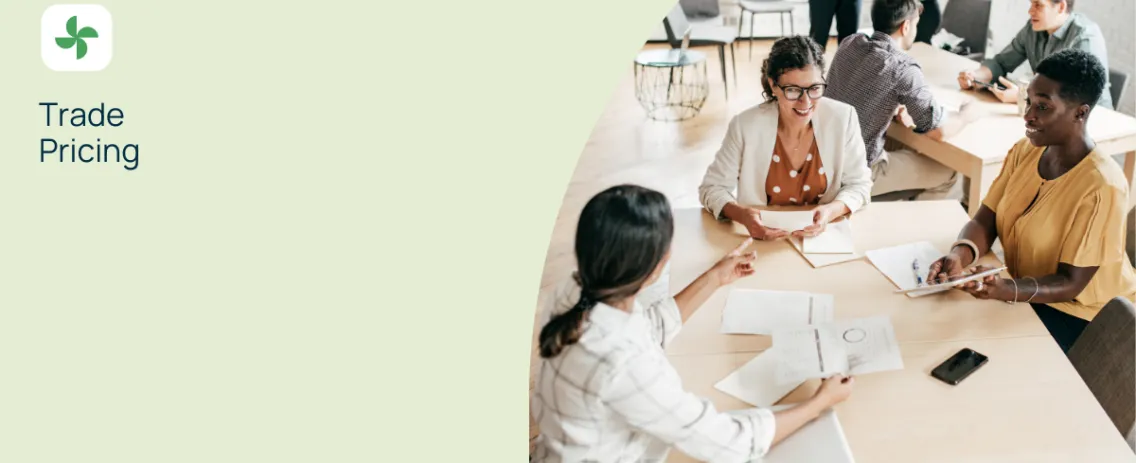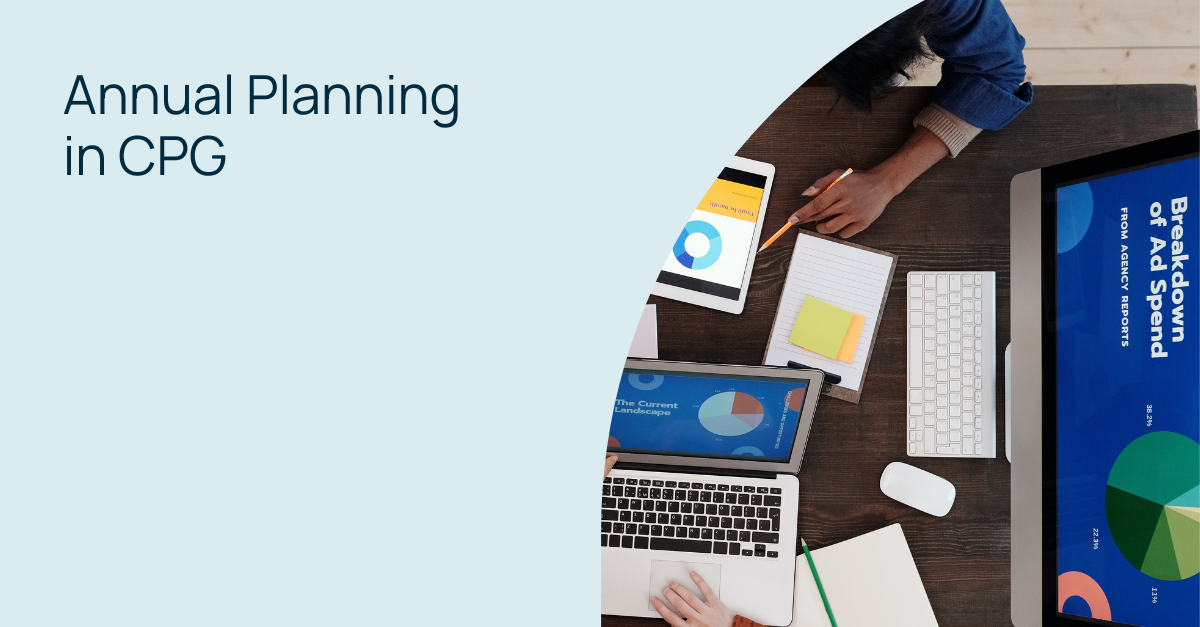
Navigating trade pricing in CPG
Traditionally trade pricing negotiations were an annual event, with CPG manufacturers and their retail counterparts undertaking an elaborate ritualized dance which, hopefully, ended in mutual agreement.
More recently, this has been transformed. The dance floor may look the same, but the partners often come together many times a year.
This is partly down to the relentless drive to preserve profitability in a ruthlessly competitive market. But it is also a result of broader changes ranging from longer-term shifts in shopping habits, to endemic economic and political volatility, which has in turn fueled inflation. This has changed how CPG trade pricing models are prepared ahead of those critical pricing negotiations.
Annual negotiations were traditionally preceded by a mammoth spreadsheet exercise spanning pricing, forecasts, trade spending and other factors. This might have been arduous, overly manual, and often relied on patchy data. But once done commercial teams didn’t have to think about it for another year.
But this approach is no longer fit for purpose. More involved and more frequent negotiations mean CPGs need to consider many more factors and evolve multiple scenarios and solutions before they even enter the meeting room. This means they must rethink the data and tools they rely on to establish their baseline, produce their forecasts, and finetune their negotiating strategy.
This article goes into more detail about how the trade pricing landscape has changed, what this means for commercial teams, and what it takes to keep up in this new, highly volatile environment.
Planning for price negotiations in CPG
An account manager or sales professional should have a good idea of what they want to get out of a trade pricing negotiation well in advance. They will be looking to deliver a result that contributes to the overall profitability goals laid down by HQ and which takes account of the broader context around wage increases, commodity prices, and more, set out by their finance department.
They will try and balance the percentage increased they are looking to gain against the investment they are able to make with the retailer, whether that is through discounts, contractual spend, or other options.
This preparatory work might be at a relatively high level of detail, driven by the overall business strategy. This might result in a pricing proposal that matches the company goals, but which might not leave account managers much freedom in their negotiations with retailers.
Product level planning will bring the conversation down to individual lines. This makes for a much more diversified negotiation and a potentially higher level of adaptability and flexibility. But it will also be far more complex to produce.
And retailers will have their own objectives and broader context too – and will be speaking to other suppliers. Negotiations might head off in unexpected directions. And if they reach an impasse, the onus is on the CPG vendor to come up with a more compelling offer. Which means reworking their strategy.
Negotiations can progress far more smoothly if the CPG can anticipate and plan for a range of potential outcomes. Such a scenario planning approach means they can consider a range of conditions ahead of the negotiation, for example, optimizing discounts to achieve a specific net pricing level or understanding why an individual retailer is more focused on cashflow this year. That way, if negotiations take a particular turn, they always have a potential response, ready to present to the retailer.

Pricing Elasticity Modelling
One important element in setting prices is the concept of pricing elasticity. This is a measure of how sensitive customers are to price changes. It quantifies how demand for a product will change in response to price changes.
It is typically expressed as a coefficient, derived from dividing the percentage change in demand by the percentage change in price. A positive coefficient suggests elastic demand, with a change in price leading to a larger proportional change in demand. A negative coefficient – or inelastic demand – means that a price change will lead to a smaller proportional change in demand.
It’s clear how this can inform trade pricing strategies, even as CPG’s cannot influence consumer prices. But it also takes the complexity involved to a whole different level. And price and demand changes do not happen in a vacuum. Broader competitive issues need to be taken into account, along with the effect of promotions and other activities need to be taken into account.
Consequently, pricing elasticity – or at least the calculation of it – tends to be the domain of specialist agencies who execute so-called conjoined analysis. However, their reports constitute another data type that can be integrated into a CPG’s own scenario planning process, depending on the tools they are using and the flexibility of their procedures.
Trade Pricing strategies in CPG and challenges in practice
Rather than talking about CPG firms setting prices, it makes more sense to talk about pricing strategies.
As we’ve seen, trade pricing is planned within a broader financial framework laid out by finance and senior management. C-level management will have set growth and profitability goals, which finance will have disaggregated to create targets for price increases, whether at a market or individual retailer level.
For the commercial team negotiating with retailers, simply raising everything by 5 percent or 10 percent is unlikely to work. The “price” is one part of an equation that will include discounts, promotional activity, and other contractual investments.
So, things become much more complex. Retailers might be far more wary of a price increase around non-essential or impulse products, reasoning that consumers are less likely to buy beyond a certain point. Likewise, they might feel they have little latitude to raise prices in categories with many alternatives – fresh foods or meal components might be competing with premade meals and even eating out.
But price rises might be easier to implement in other categories, particularly those with high margins, such as cosmetics or consumer health products.
Product lifecycles come into play if a CPG vendor is taking the long view. For example, a manufacturer might have a traditional, staple product that is in slow, long-term decline, as well as a newer product with a smaller market share, but a bright future. It might appear the best strategy is to squeeze margins from the traditional product for as long as possible while embedding the new product in the market.
However, in the longer term, it could make sense to offer a lower price on the established product but advance a higher increase on the newer product. That’s because the innovative, new product is expected to achieve market leading status in a few years. If the price differential is maintained, it will continued to earn a higher margin and contribute more profit as its market share grows.
The CPG account manager will be dealing with a retail counterpart who must operate within their own financial framework. And, of course, that counterpart will be dealing with multiple CPG vendors with multiple lines, and their own pricing and market ambitions.
A CPG team might have built a meticulously orchestrated trade pricing strategy combining carefully calculated price rises, combined with tempting contractual investments, which will deliver their targets across their retail partners.
But if the sales team does not understand a key retail partner, and ensure they have a grip on broader market intelligence, their strategy could be a non-starter, before they even walk into the meeting room.
If this happens, weeks of painstaking planning and calculation become moot, with sales teams having to rush back to their spreadsheets to rework their offer – and contemplate the knock-on effect on their overall results.
This, necessarily, takes time. And the market can change again in the meantime.

How Visualfabriq smooths Trade Pricing negotiations
Setting trade pricing is always going to be complex. But it doesn’t have to be tortuous. And it certainly doesn’t have to be a manual, spreadsheet-bound process.
Visualfabriq’s software platform is designed to pull together the disparate data sources commercial and finance teams need to inform their trade pricing strategies, smoothly, quickly, and continuously. Its embedded AI creates reliable baselines and detailed forecasts, allowing sales professionals to create, analyze and visualize multiple scenarios.
The software spans the full range of CPG disciplines, including trade promotion management and trade spend management, demand forecasting, marketing, and ultimately revenue growth management. So, sales and account pros can model and optimize their trade spend plans and see the effect they have on other functions within the business. And vice versa.
This increased visibility streamlines the creation of trade pricing strategies ahead of negotiations, including alternative scenarios, which show their impact on the bottom line.
But it also means that when negotiations create the need for change this can be done rapidly, with full visibility into the effect on trade promotion activity, and finance. Professionals aren’t just saved from returning to their spreadsheets. They don’t even have to leave the meeting room.
Takeways
Getting pricing right has always been a complex process, involving many moving parts.
But in an increasingly volatile market, which demands more frequent price adjustments, legacy tools can’t produce the detailed forecasts or the visibility across the market that sales professionals need.
Visualfabriq enables the seamless pulling together of data to create, model and optimize CPG pricing models, and their associated contractual investments.
This removes toil ahead of negotiations, meaning commercial and finance teams can focus on the best outcome for the manufacturer and the retailer, without losing momentum.
To see how Visualfabriq could transform your CPG trade pricing model, get in touch today to organize a briefing, or arrange a demo.


